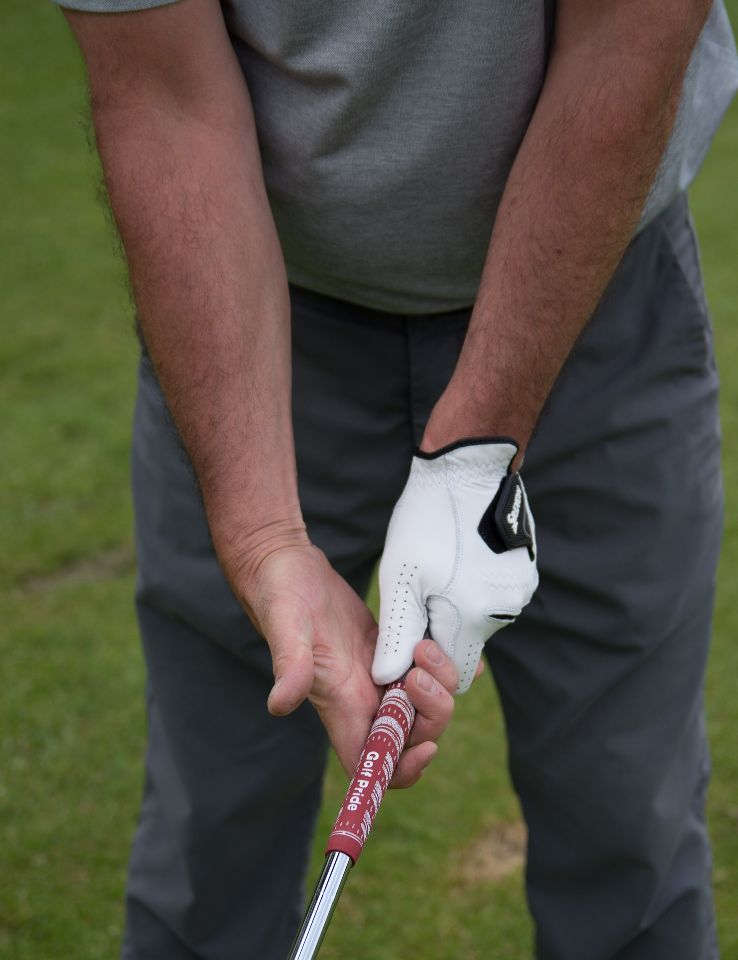Hooking your driver off the tee is a guaranteed way to have a long, frustrating day on the golf course. Successfully and consistently hitting a driver into the fairway is one of the hardest things to do in golf.
A driver is unlike almost every other club in the bag. Its club face is much larger, it’s shaft is longer, and it has more flex in the shaft than other clubs. All these components add up to make the driver the hardest club to hit in golf. For some, this means terrible slices. Others experience strong hooks off the tee.
In the article below, we are going to focus on why some golfers hook their driver, even though they don’t experience this issue with their irons.
We will look at the main 5 causes of tee shot hooks as well as 3 ways to fix the problem. We have a lot to cover so let’s jump in!
Why Do You Hook Your Driver But Not Your Irons?
Lower loft clubs, such as a driver, typically have longer club shaft lengths. This increase in club length requires a change in swing mechanics as well as a different stance relative to the ball. This is why many golfers struggle off the tee with a driver, even when they are having success with their irons.
Keep reading below for detailed instructions on determining the root cause and fixing the issue.
5 Reasons You Hook Your Driver But Not Your Irons
Your Grip Is Too Strong
One of the most common causes of a hook off the tee is your grip. Golfers with a strong grip are prone to hooking the ball, especially with their driver.

For a right-handed golfer, a strong grip means your right hand is dominant when gripping the golf club. Too strong of a grip can lead to excessive rotation of the golf club before impact. This rotation is what causes the ball to hook after impact.
Be sure that you have a neutral grip when picking up your driver.
Incorrect Tempo
At its core, swing tempo is the speed and smoothness of your swing. Swing tempo changes based on the club’s length, flex, and weight. As a golfer’s tempo changes, so do the swing path and angle of the club at impact.
Golfers who hit their irons well, but hook their driver, may have something off in their swing tempo with longer clubs. To fix your swing tempo, practice hitting half-swing with your driver. Once you can hit the ball straight, without a hook, add a little more distance in your swing.
Repeat this process until you are able to complete a full swing without hooking the ball. This may take some time to master, but its one of the best ways to reset your swing tempo.
The Golf Ball Is Too Far From Your Body
Proper tee placement is also an important tip on the list. The location of your golf ball in relation to your feet can cause you to slice or hook the ball.
Placing the ball too far from your body can lead to the club path coming too far inside at impact. To compensate for this path, your hands need to rotate at impact causing the ball to hook.
You should be able to place the driver head behind the ball without having to stretch and without it being too close where your hands are close to your body.
Correctly placing the ball and tee in the ground can make a huge difference for those who struggle off the tee. Be sure to check your golf ball and tee placement during your next round.
Too Much Weight On Your Front Foot
Like the above tip, your weight distribution can also play a role in how you hit the ball. Golfers should be distributing around 65-75% of their weight on their front foot when teeing off.
Moving too much weight to your front foot will bring the club face around too fast in your swing. For best results, make sure that you have the proper weight distribution when swinging your driver.
The Driver’s Design
Buying a new driver or upgrading to a new shaft can affect your swing path, leading to hooks off the tee. While equipment is not typically the main culprit, it is possible your driver could be intensifying your problems off the tee.
If you recently changed your driver or it’s shaft, consult your local pro to make sure the new driver’s dimensions fit your swing mechanics.
You will need to get a fitting done when the club is the underlying issue. The golf shaft flex, length, and weight can all have a material impact on your swing mechanics. Sometimes it really is as simple as changing your driver for better results.
3 Ways To Fix A Hook With A Driver
Loosen Your Grip
Reviewing your grip is the best place to start if you are hooking balls off the tee. For right-handed golfers, if your right-hand covers most of the grip and your left hand is hidden when you look down, your grip may be too strong.
Loosen your grip so that your right hand is less dominant. This will prevent excessive rotation at impact.

Adjust Your Stance To The Ball
Proper stance in relation to your golf ball is extremely important. As discussed above, placing the ball too far from your body will cause the club face to rotate too much before impact.
Your golf ball should be a comfortable distance away from your body. If you find yourself reaching to get to the ball, you are going to be prone to hooking the golf ball.
Placing the ball too far front in your stance can also lead to hooking the ball. Make sure the golf ball is about an inch behind the inside of your leading foot when you address the ball.
Next time you tee it up, make sure the golf ball is placed properly in relation to your body. These simple tips can make a huge difference in fixing your swing.
Take A Lesson With Your Local PGA Professional
When all else fails, it’s time to get the experts involved. Many golfers are hesitant to go right to their local professional when they need help. However, it’s the smartest thing you can do when struggling off the tee.
Your local golf pro has seen it all. They will be able to quickly assess the issue and provide invaluable insights into fixing your swing. Plus, if it is an equipment issue, they will be able to fix the club or recommend a club more suited to your swing.
Final Thoughts
Hooking the ball with your driver can be extremely frustrating, especially when it’s the only club that you hook. Luckily, you can implement these simple tips in your game to fix the issue.
Try the simple tweaks above next time you are out on the course. Small changes can make a big difference. Hopefully, you liked this article and found it informative. Check out our other blog posts if you liked this one!


